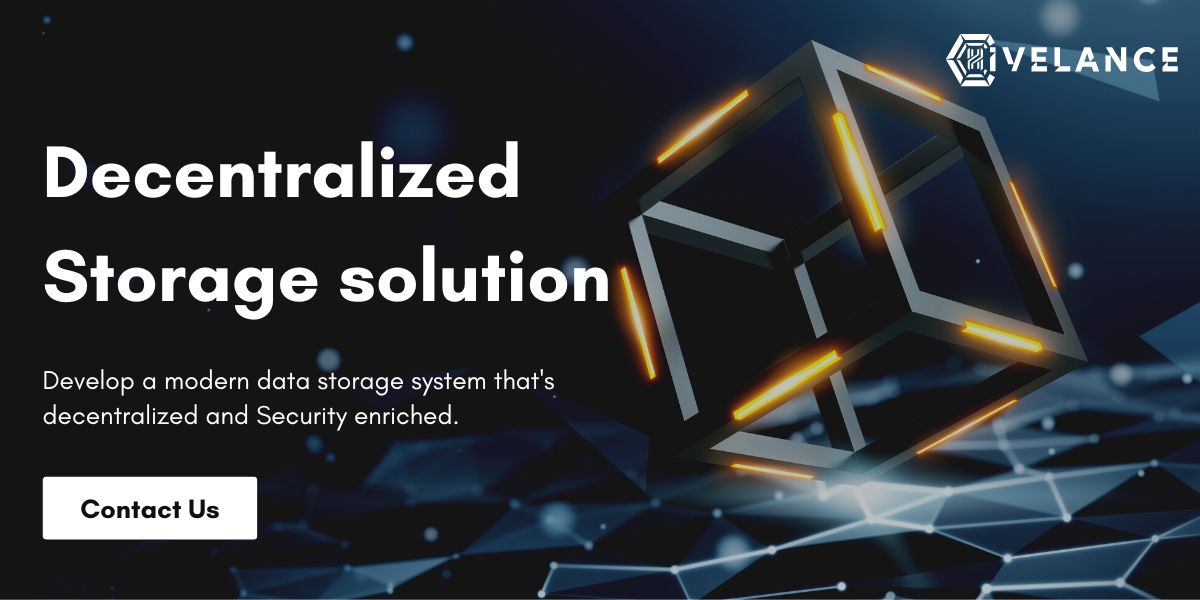What is a decentralized storage system?
Decentralized storage system is a data storage system that doesn’t rely on centralized servers like the cloud. It is connected by a network of multiple nodes that integrates a large set of data into the unified form. The data is split up into micro pieces and hashed together to keep the privacy safe since it is the most worrying concern for internet users.
No one can have the right to sell users data as it is encrypted by blockchain technology. The decentralized storage system can be blockchain based network or peer to peer based network.
How do decentralized data storage systems work?
The process can be split up into three phases. Sharding, Encrypting, Validation.
1. Sharding
Sharding is the phase where blockchain technology breaks data into small pieces of data. The data is then hashed with a cryptographic method and assigned to individual nodes who lend space for storage. The miners get rewards for offering computing power to unlock the algorithm.
2. Encryption
The block is encrypted with public-private keys and users' information is kept hashed. Hence no one knows who stores the data, who uploads the data and any other details. Finally, multiple sets of user groups are combining the data hosting them in decentralized locations.
3. Validation
Validation is the phase occurring in the data retrieving process. To view the data, block validation should be done by cross-checking the private-public keys. The system also embraces load balancing techniques here in the phase. When any host is experiencing downtime in delivering the output, the system advances the users to other distribution nodes avoiding system failure.
What are the types of decentralized storage (dStorage) options
The decentralized storage can be classified into different storage methods depending upon the protocols defined. They are,
- Incentive based structure.
- Data retention.
- Decentrality.
- Consensus mechanism.
1. Incentive based structure (Persistence)
When the data is added to the nodes, the users get credited with incentives for allocating a space in their device. The data gets hosted on multiple users' devices(nodes) and transmitted across the distributed ledger technology.
It is called as Incentive based structure. It can be further divided into three types like Blockchain based, Contract based, IPFS based.
i) Blockchain based storage
Blockchain takes control of finding the storage transactions, data location, leasing time for separate users and other micro details. This type of mechanism is called Blockchain based incentive storage and used for keeping the data forever in the system.
In this method, the data gets stored for lifetime and replicates as the nodes are multiplying.
ii) Contract based storage
In this model, the users(nodes) are agreed with a specific timeline to store the data. When the user isn't able to store and retrieve the data at the given interval, they should refund the incentives as per contract. The nodes have the hashed information of where the data location is, not the actual data so there is no need for every node to replicate the data.
iii) IPFS based storage
IPFS is the distributed file sharing system that can store data like websites, apps, images and videos. It is not the incentive scheme but it can be integrated with contract based storage solutions. It can keep the data forever in the system. The IPFS blockchain system is the most used storage solution for web3 applications in the current timeline.
2. Data retention
In order to check whether data is hosted or not, data retention methodology should be employed. For example, cryptographic challenge is the type of automated notification that is sent to the nodes and checks if the data is present or not. The challenge check for the most recent storage block and past node then validates the storage transaction. If the users did not hold the data, they get penalized depending upon the contract.
3. Decentrality
Decentrality is the concept of multiple users controlling different subset of data without centralized authority. In order to keep the users believing that they are using decentralized platforms, these tools without KYC can help. For example, 0chain, skynet, Arweave, Filecoin, IPFS and Ethereum.
4. Consensus mechanism
The storage system should employ any of the consensus models either proof of work or proof of stake. Every system has a different set of mechanisms.
Benefits of decentralized storage networks
Reliable - The data gets stored on the decentralization network with peer-peer network. Hence in case of any data failure, the system is already backed up with original copies. In addition to that, it uses a sharded method to encrypt the data. This keeps the users data safe and confidential by showcasing only hashed data.
Operational cost - As the system is a p2p network, there is no need for extra resources to handle the data storage part. The hardware requirement is also less needed in decentralized storage which greatly reduces the operation cost.
Accessibility - There is no server breakage that can occur in decentralized storage solutions because data is not hosted on a single server. People can access the data from nearby nodes very faster without worrying about server bandwidth and capability.
No middleman - There is no single point of failure in decentralized storage and no middleman is controlling the entire data information. The data is fully protected with cryptographic techniques and encrypted with private keys.
Why go for Decentralized Storage?
Decentralized storage gets the mainstream attention due to its data privacy and security. Still large organizations like Google, Facebook are trying to solve the data breach problems and hackers find new ways to get users' data.
Also, decentralized storage eliminates the data breach problems completely. Because here the servers are replaced by users with Internet connection. They seed and receive the fragments of the data information on the approval of blockchain transactions. All are automatically done without any centralized party involved.
Other than that, Companies themselves sell the users information in exchange for showing advertisements. The data privacy is completely out of control in the hands of users. Meanwhile, in decentralized storage systems, there is no place for ad games and data exchanges.
Decentralized cloud storage using blockchain
Blockhcain when fused with decentralized storage can do wonders in data storage mechanisms. Blockchain is the peer-to-peer based system that records the information in a distributed ledger.
Decentralized storage is the kind of diversified data available in micro pieces to form the consolidated information. The blockchain cloud storage system consists of miners, data uploaders and Blockchain technology.
The blockchain assigns the data in blocks that get distributed across the nodes. The miners lend their computing power to solve the cryptographic algorithms and gain rewards in cryptocurrency. As we earlier, the incentive based scheme lets the users continue participating in the system as long as they wish to.
Decentralized storage for web3 apps
Nowadays, web3 applications are emerging in social media, video streaming, audio sharing, voting platforms, and many more use cases. The web3 startups that employ a decentralized nature of business model always rely on decentralized storage.
The storage architecture is the significant component in building a successful web3 app. Depending upon your project feasibility, choose the decentralized storage solution which is scalable in the long run.
Best ways to implement Decentralized Storage Systems
Latency check
The business who adopts decentralized storage must ensure the latency of the hardware system in delivering the data. Here the user's device is the hardware part. Applications should be designed in a way to be flexible for users' devices.
Test the results
The data redundancy is important in decentralized storage. Because, users upload the data, then it is processed into many fragments and distributed to many sources. The storage architecture must be capable of handling bandwidth of uploading.
Decentralized storage projects so far
- Arweave
- BitTorrent
- Filecoin
- Maidsafe
- Sia
- IPFS
- Swarm
- OrbitDB
- GUN
- Skeps
- Akash network
- Internxt
- Burst
Best decentralized cloud storage development from Hivelance
Hivelance is the right place for decentralized storage development. In many complex cases, we have identified the root cause and given the decentralized storage solutions in a subtle way. We are a strong team of technical experts who can take care of your project from the initial stages itself. We are assisting many web3 projects in their decentralized storage architecture.
 Trends
Trends
 Crypto
Crypto
 Web 3.0
Web 3.0
 AI
AI
 Blockchain
Blockchain
 Fintech
Fintech
 Company
Company


















